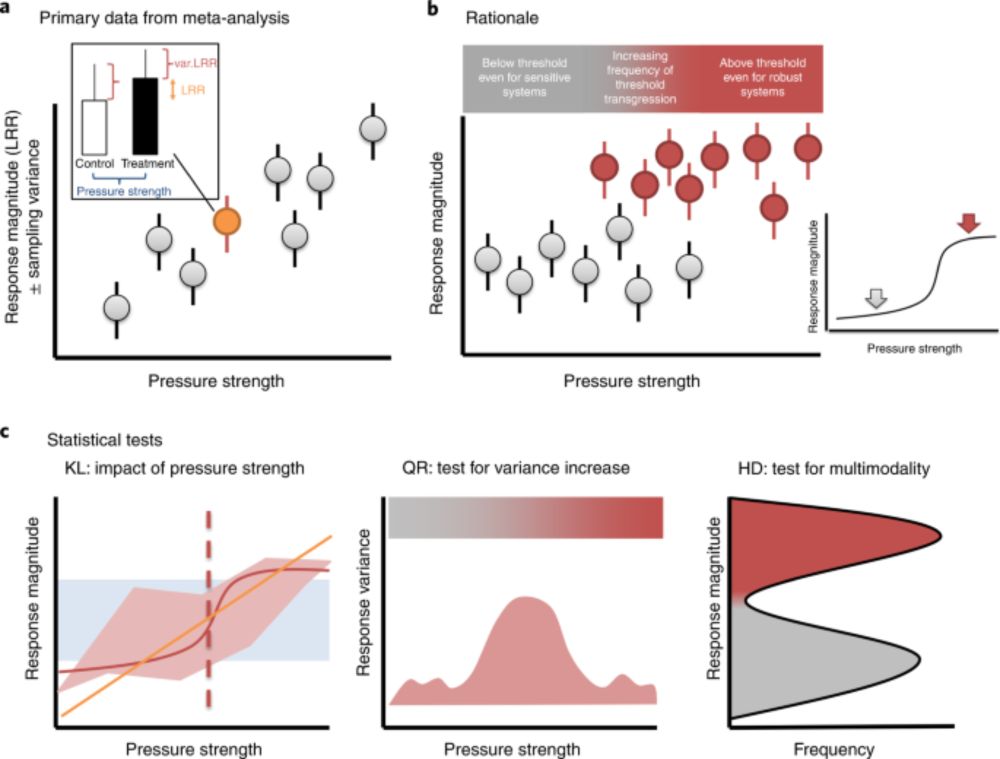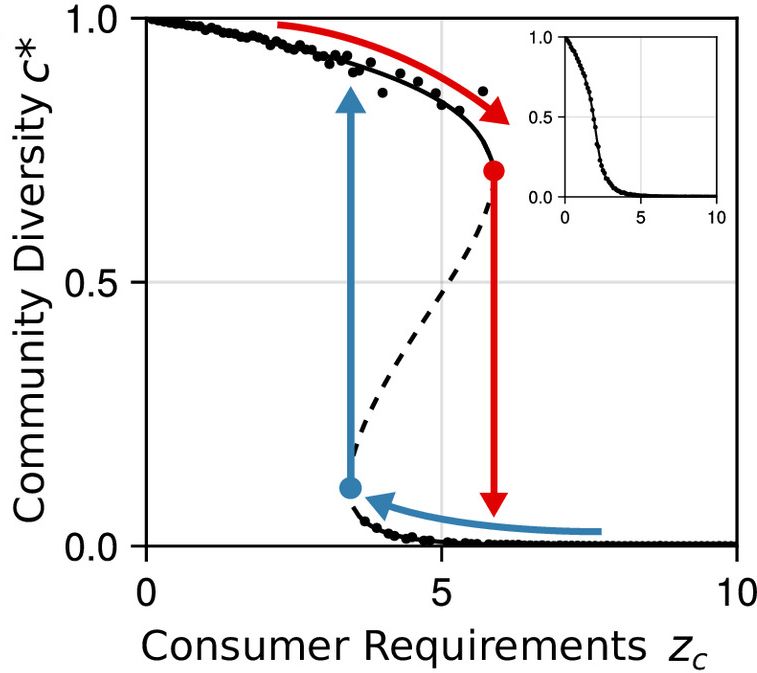
Thilo Gross
@thilogross.bsky.social
Simplifier of things. bridgewalker. Island-person. Nets and Complexity. Prof of Biodiversity Theory. Former Prof. of Computer Science, Reader in Eng. Maths. Once a Physicist. Interested in art and language and generally making the world a better place.
This focus on using research funding to support business is harmful.
June 23, 2025 at 8:11 AM
This focus on using research funding to support business is harmful.
I would just leave the country in which there is a financial crisis in higher education. In fact, I have.
May 14, 2025 at 7:37 AM
I would just leave the country in which there is a financial crisis in higher education. In fact, I have.
To explore this further we need models that can exhibit both tipping and gradual transitions in biodiversity. The cross-feeding model proposed here is a very simple model that fills this need.
Of course there is still much room for improvement, but this is how far we got.
Of course there is still much room for improvement, but this is how far we got.
May 7, 2025 at 8:38 AM
To explore this further we need models that can exhibit both tipping and gradual transitions in biodiversity. The cross-feeding model proposed here is a very simple model that fills this need.
Of course there is still much room for improvement, but this is how far we got.
Of course there is still much room for improvement, but this is how far we got.
There is another reason why this is interesting. Presently there is a debate whether or when biodiversity in diverse systems can actually tip. See for example this paper by @hillebr1.bsky.social et al.
www.nature.com/articles/s41...
www.nature.com/articles/s41...

Thresholds for ecological responses to global change do not emerge from empirical data - Nature Ecology & Evolution
The utility of the threshold paradigm, such that relatively small perturbations drive abrupt ecosystem changes, is challenged by a synthesis of 36 meta-analyses, which detected few signatures of thres...
www.nature.com
May 7, 2025 at 8:38 AM
There is another reason why this is interesting. Presently there is a debate whether or when biodiversity in diverse systems can actually tip. See for example this paper by @hillebr1.bsky.social et al.
www.nature.com/articles/s41...
www.nature.com/articles/s41...
In the lab we then supply the community with growth media which supply some of the metabolites. This effectively removes these metabolites as limiting requirements. So this can be also modelled as an attack: C(x)->C(B(x)), where B describes the medium.
...
...
May 7, 2025 at 8:38 AM
In the lab we then supply the community with growth media which supply some of the metabolites. This effectively removes these metabolites as limiting requirements. So this can be also modelled as an attack: C(x)->C(B(x)), where B describes the medium.
...
...
Why is this interesting: First, it shows why diversity tends to collapse in small samples. By missing some of the producers of metabolites we can cross the tipping point. In the equations we can model this effect of sampling as an attack on the network: We replace M(x)->M(A(x)).

May 7, 2025 at 8:38 AM
Why is this interesting: First, it shows why diversity tends to collapse in small samples. By missing some of the producers of metabolites we can cross the tipping point. In the equations we can model this effect of sampling as an attack on the network: We replace M(x)->M(A(x)).
Of course this is the classic two-folds scenario of tipping, so when we vary a second parameter (e.g. mean number of producers per metabolite), we find a nice Cusp bifurcation. This shows that the transition from high diversity to low diversity can occur by tipping/gradually depending on params...

May 7, 2025 at 8:38 AM
Of course this is the classic two-folds scenario of tipping, so when we vary a second parameter (e.g. mean number of producers per metabolite), we find a nice Cusp bifurcation. This shows that the transition from high diversity to low diversity can occur by tipping/gradually depending on params...
For reasonable choices of parameters this system exhibits tipping points between a low and high diversity state ...

May 7, 2025 at 8:38 AM
For reasonable choices of parameters this system exhibits tipping points between a low and high diversity state ...
So this becomes a percolation problem. The whole setup is captured by two nice eqs. Here c* is num of bacteria chance m^* is num of metabolites, and C, M, are the GFs for number of requirements, number of producers per metabolite ...

May 7, 2025 at 8:38 AM
So this becomes a percolation problem. The whole setup is captured by two nice eqs. Here c* is num of bacteria chance m^* is num of metabolites, and C, M, are the GFs for number of requirements, number of producers per metabolite ...
So this becomes a directed bipartitie network, but if you want you can also think of it as a multilayer net or hypergraph.
What fascinates me is the algebraic structure: Bacteria in the system need ALL their requirements to be met, whereas metabolites need ONE of their producers to be present...
What fascinates me is the algebraic structure: Bacteria in the system need ALL their requirements to be met, whereas metabolites need ONE of their producers to be present...
May 7, 2025 at 8:38 AM
So this becomes a directed bipartitie network, but if you want you can also think of it as a multilayer net or hypergraph.
What fascinates me is the algebraic structure: Bacteria in the system need ALL their requirements to be met, whereas metabolites need ONE of their producers to be present...
What fascinates me is the algebraic structure: Bacteria in the system need ALL their requirements to be met, whereas metabolites need ONE of their producers to be present...
So this is about about crossfeeding, that is the exchange of molecules between bacteria. Think of this as a network where each node is a species of bacteria or a type of metabolite. Directed links indicate which metabolites are required by, or produced by the bacteria. ...
May 7, 2025 at 8:38 AM
So this is about about crossfeeding, that is the exchange of molecules between bacteria. Think of this as a network where each node is a species of bacteria or a type of metabolite. Directed links indicate which metabolites are required by, or produced by the bacteria. ...

